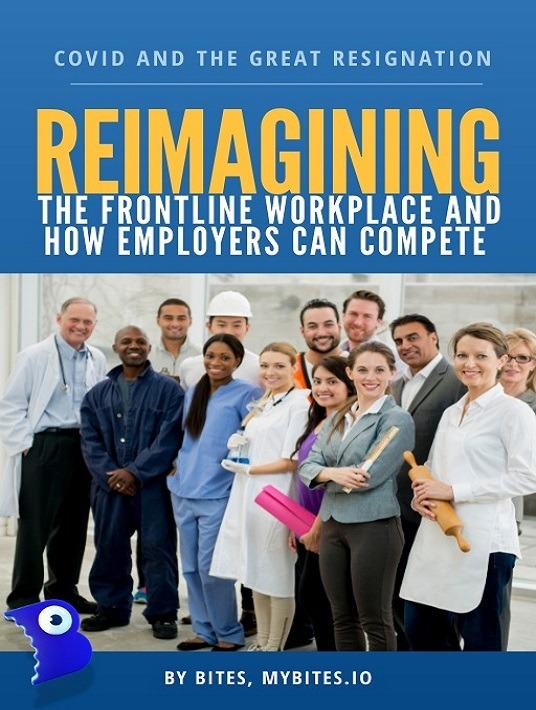How Did The COVID Crisis Impact Your Frontline Workers?
Remote employee management is a challenge at regular times let alone during a crisis at the magnitude of the pandemic. During the pandemic outbreak, most people found themselves working remotely for the first time in their lives, and most managers were forced to manage their employees remotely without being trained to do so. Lockdowns, imposed in many countries, forced many companies and people to juggle between work and caring for their children who also studied remotely. The lock-down and need to still be connected to work accelerated the use of online communication platforms, mainly video conferencing, training, and other technologies that could help to bridge the need to stay connected.
These changes have provided us with a unique opportunity to examine how these times are changing employment as we know it and how technology helps to impact and cope with those shifts. The workplace as we know it is redefining many behaviors and social dynamics and joins the fundamental questions about the nature of work, work-family balance, and the mixing of work with private life. This eBook focuses on frontline workers that were impacted by these changes and are leading to another interesting phenomenon named “the great resignation.”

eBook Release
COVID And The Great Resignation: Reimagining The Frontline Workplace And How Employers Can Compete
Hybrid work, new disciplines, and the ever-changing workplace are what this eBook is about.
Who Are The Frontline Workers?
Frontline employees are the cornerstone of any successful business across all industries. The term frontline suggests they are usually engaged in a person-to-person job and are critical in providing services, and care across many sectors of our everyday lives. We interact with frontline workers, hospitals and pharmacies, restaurants, banks, retail venues, malls, and anywhere there is human interaction. Frontline workers hold various roles – from Nurses and doctors. These functions are critical to business continuity. The astounding fact is that 80% of the worldwide workforce is frontline and according to Statistita in 2021 the US alone had 31.67 million frontline workers.
What’s The Difference Between Remote And Frontline Workers?
The distinction between remote workers and frontline employees is based on a clear difference: Remote workers are an understanding in which employees can carry out their duty in an alternate workplace/home. The alternate venue can be inside or outside the business region and during the pandemic, it is usually the employee’s home. The definition from Brookings. defines “frontline workers” as employees within essential industries who must physically show up to their jobs2.
These workers may frequently be in close physical proximity to customers and colleagues”. One more characteristic is that frontline teams can be seen as doing the same function in various locations: Hotel chains, Retail franchises, Healthcare providers, and many others.
And Then Came COVID – What Happened?
A major shift that impacted the business was that physical distance prevented valuable information from passing between managers and their employees or between peers. Small talk, which is an important part of the social fabric became non-existent, and these conversations play a key role because in which employees share with managers personal details, difficulties, achievements, and even daily experiences, and they help strengthen interpersonal relationships and strengthen the mutual connection and benefit in team building. This valuable information, which helps managers in their work and creates a deeper connection between them and the employees, has disappeared completely.
Understanding The Roles, Functions, And Management Of Frontline Employees
Managers can see employees during the day and have some idea of what they are doing. For example, communicating with people at the same location happens exactly when managers want. In the pandemic communication and setting, priorities were instrumental in keeping the business going. Frontline employees were exposed to much more confusion during the outbreak and creating a powerful sense of security in employees with a clear purpose worked for everybody’s benefit. Communicating daily with short clear messages amped the social and emotional support, and developing perspective develops personal resilience, all of which produce a sense of belonging and reduce negative emotions among employees.
Development Of Supportive Work Routines As A Part Of Learning And Development
From many companies’ best practices, the most effective way to get teams engaged and cope with uncertainty was to communicate to employees what is expected of them, make them understand how to work remotely, and give them the confidence that it will work. All of the pressing matters such as new work routines and how to handle safety were discussed together with the employees on new work routines by asking helpful questions: “How often will we call each other? Will the communication be through a phone call, text message, or a zoom meeting? Video messages? What is the way of working that works for us?”
Conclusion
Download the eBook COVID And The Great Resignation: Reimagining The Frontline Workplace And How Employers Can Compete for insider tips to support your frontline employees and stay competitive in your industry.
Additional Resources

Bites Microlearning
Bites helps SMB & enterprise businesses create, share and manage professional content with their frontline employees. Create professional content, share through social channels and manage usage to help employees meet their full potential.
Originally published at mybites.io.

